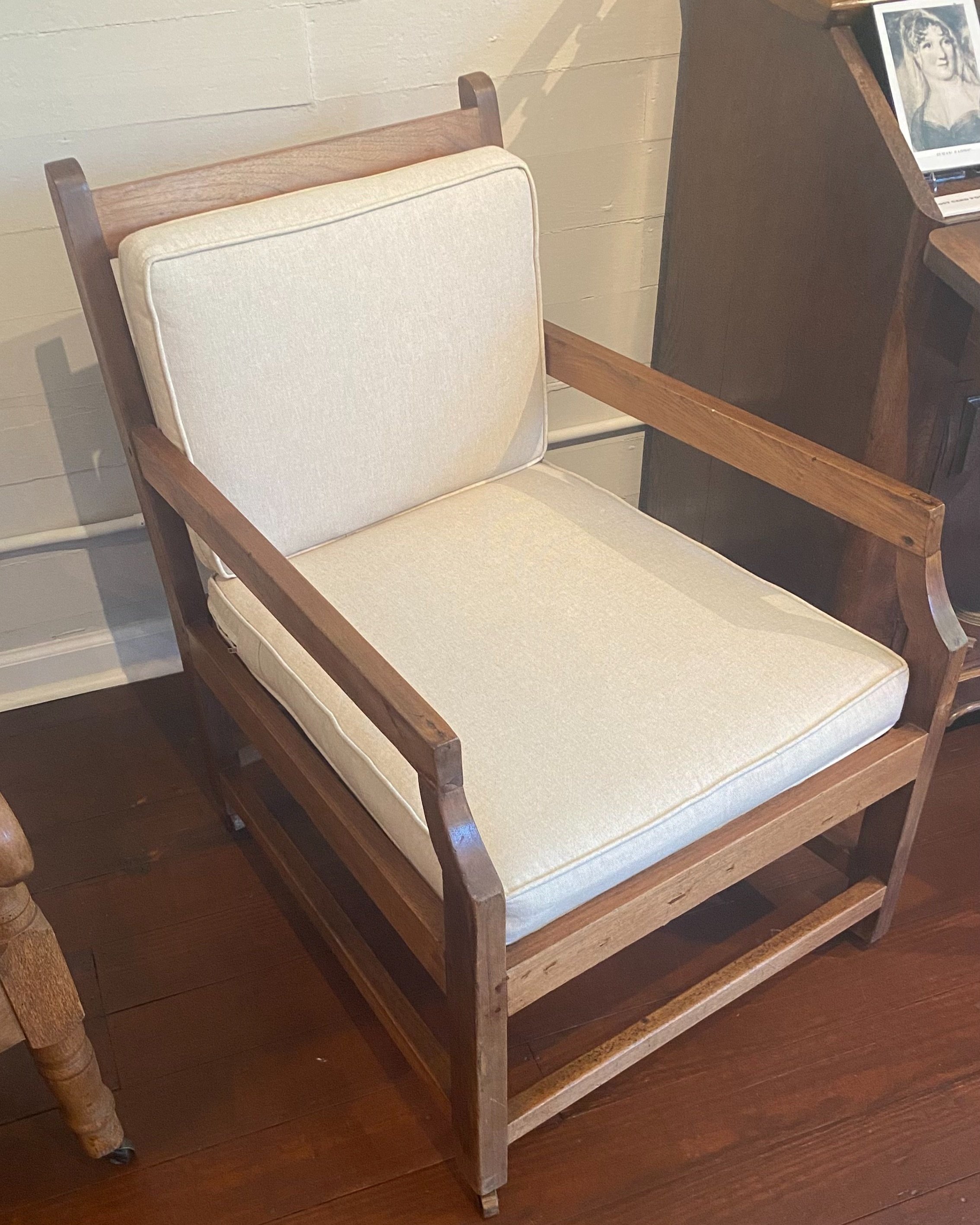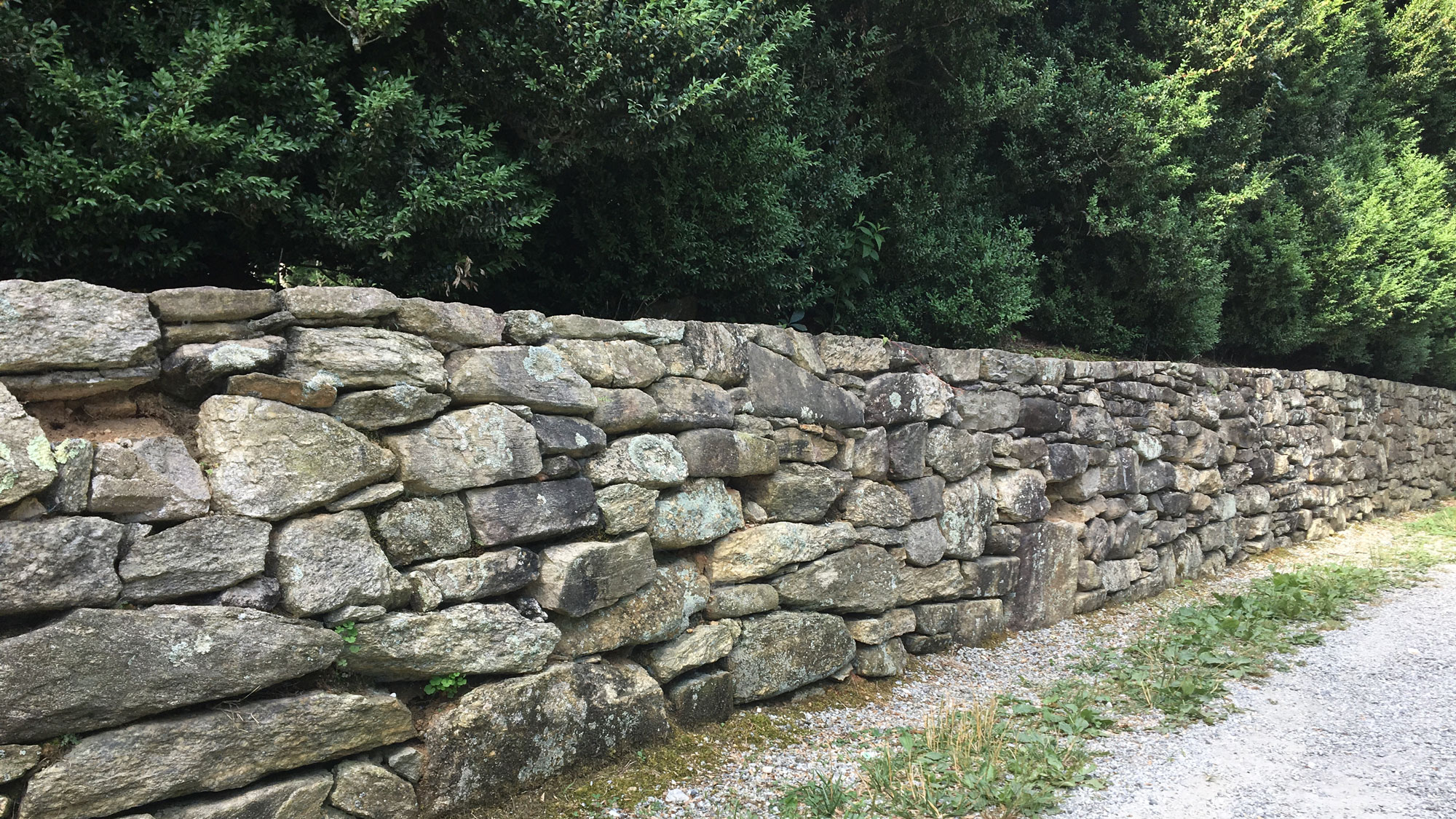The Old Mill
/By Lenoir Ray
(Note: The following history of the Old Mill House in Flat Rock on West Blue Ridge Road is excerpted - with some additions as noted - from Charles Lenoir Ray’s book, “Postmarks”, published in 1970.)
The history of "The Old Mill" goes back nearly 140 years to the day, December 21, 1830, when Peter Summey took out land grant number 12901 for the property.
Mr. Summey was a miller and picked this site on Earle's Creek (now King’s Creek) in Flat Rock because the stream was just right for putting up an undershot wheel to operate his mill. He ran the mill for some 16 years and although no record exists of the type of building he had constructed, it was more than likely a log cabin.
His brother, George, operated a tavern on the high road (now Greenville Highway, NC- 225) about a half-mile south of the present Flat Rock post office. George was also the postmaster. Some people objected to going to the tavern to get their mail, so George gave up the office in 1836. Peter was appointed in his place on May 16 and he moved the post office to The Old Mill.
However, the present Flat Rock Road (today West Blue Ridge Road) did not exist. There was another road, which was a part of the Little River Road that crossed the High Road to the north and wound through present-day Bonclarken and came out below The Old Mill.
Since East Flat Rock did not exist, it was not a through road but stopped at Many Pines (present-day Hillandale sub-division). This was too out-of-the-way for the general public and the post office was moved back to George Summey's tavern in two years.
Club and Hotel
In 1846, Peter Summey sold his property to Jacob Ramseur, who conveyed it to Alexander Ramseur in 1847. On December 18, 1847, Andrew Johnstone (who was killed by bush-whackers during the Civil War) and Judge Mitchell King bought the property from Ramseur.
This land then became (part of) the property put together by a group of summer people in Flat Rock to form a club. Henry T. (Squire) Farmer built the clubhouse but before construction was completed the club disbanded and Farmer bought the club holdings. He opened the clubhouse as the Farmer Hotel. (Later to become the Woodfield Inn and currently Mansouri Mansion.)
With the road conditions being such as to prohibit the transportation of heavy objects, Mr. Farmer could not come by furnishings readily for the hotel and for the many other homes he constructed locally. To solve this problem, he set up a furniture factory - the location was The Old Mill. He used the power of the water-wheel to operate saws and lathes and made tables, chairs, beds and cabinets.
Squire Farmer
“He owned a machine shop and small brickyard on a portion of the hotel tract and operated Peter Summey’s old mill on King Creek (Earl’s Creek). Farmer converted the mill into a furniture factory where they crafted chairs, tables, wardrobes, and other pieces to supplement the original furniture made for the hotel by J. & J. Hildebrand of Asheville.” (Historic Renomination, Flat Rock, NC, 2015)
Flat Rock Chair
Flat Rock Chair; Historic Flat Rock, Inc Cultural Museum
Here was developed the sturdy, functional "Flat Rock Chair" which is so well known in this area. The chair was made of walnut and the two variations in style were in the arms. The most numerous existing today have a narrow side up and a circle at the end of the arm. The other style has flat arms, wide enough to hold an ashtray or a Mint Julep. There was also a Flat Rock sofa, a huge affair by modern standards, and a rocker in this style
A post-Civil War newspaper article credits Wesley M. Justice, a Hendersonville postmaster (1880s) and cabinet maker, with being the designer of the Flat Rock Chair. This turned out to be entirely possible as it has been determined that before the war, Mr. Justice worked for Farmer in his furniture factory.
After the Civil War, a member of the Smythe family owned The Old Mill as well as the rest of the property from there to East Flat Rock. The Mill had been re-converted to a gristmill, probably during the war, and various people operated it.
After the turn of the century, William C. Jordan was the operator of the mill. He was called Will and the last name was pronounced as if it were spelled "Jerdon." For more than 50 years the mill was known simply as "Jerdon's Mill."
By 1916, Will Jordan had become the leading miller in Henderson County. As a matter of fact, The Old Mill was officially called "The Henderson County Flour Mill." Mr. Jordan ground flour, meal, bran, shorts, graham flour, chicken feed and all water-ground products. There was nothing old-fashioned about Will Jordan - he had two telephones.
In 1918, he packaged pure wheat bran in small quantities for table use and made it available at Rose Pharmacy in Hendersonville. He was away ahead of his time in putting up packaged food, so there were no self-service supermarkets for distribution.
Mr. Jordan had increased the business to such an extent that an under-shot wheel was neither powerful enough nor dependable enough to supply his needs, so a dam was built and an overshot wheel installed. This wheel is still standing along with the original portion of the mill building.
Since the milling equipment was extremely heavy, the building was made by pouring concrete into a wooden frame. After it set, the frame was pulled away, leaving the impression of the boards forever imprinted on the concrete walls.
Mill House Lodge from Baker Barber Collection. Ca 1950s
In 1921, Eugene Morrison of Statesville. N.C., bought the tract of land on the south side of the Flat Rock Road, including everything from the present Hillandale School through the Old Mill, from A. T. Smythe. Mr. Morrison was a member of the Associate Reformed Presbyterian Church and a year later was instrumental in the ARP Committee's selection of Bonclarken as the ARP Assembly site. The 1929 crash forced Mr. Morrison to retrench and he sold the Old Mill to Mr. Jordan.
The mill continued in operation, first by M. Jordan and later by his son-in-law, C. J. McFadden, until 1937. At that time, Mr. McFadden sold the physical plant to Mrs. Frank Sherrill and moved to Hendersonville. Here he changed his operation from water-ground power to electric. Today the McFadden Mill, located on King Street in Hendersonville, is still in operation, probably one the oldest businesses in continuous operation in Henderson County. (This was true in 1970 when Ray’s book was published.)
It is said that Mrs. Sherrill bought The Old Mill because she could see that World War II was coming on. Her husband had served in World War and she felt that if he were again called up, she could move herself and her children here and operate the mill. Mr. Sherrill was called up, but in a civilian advisory capacity, and they never found it necessary to put the mill in operation. Periodically during their ownership, they visited the mill and checked the machinery, keeping it in working order. They liked the area and bought other property here and finally made this their residence.
The Mill Today
Jordan Lake
Eugene Brown, of Charlotte, acquired The Old Mill from the Sherrills in 1949 on a property trade. His original idea was to make a summer home from the mill building but on removing the milling machinery, he realized the space available was ideal for apartments. Thus the Old Mill Apartments began.
It was a modest operation in the beginning, but the location was ideal and from the start there were more customers than space available. It has grown (grew) from one apartment building in The Old Mill to six buildings with 36 units. In addition to the mill pond with swimming, fishing and boating, there is lawn bowling and shuffleboard and a pavilion for cook-outs and parties. In the balmy summer months, there is invariably an artist with an easel and paints on the banks of the rocky stream below the dam recording for posterity his impression of The Old Mill.
###
(Addendum: Since Ray’s “Postmarks” was published in 1970)
In 1989, Ty and June Rhodes purchased the property, built additional facilities, and offered accommodations as Mill House Lodge. Successive owners have continued to expand upon the tradition of hospitality begun in the mid-twentieth century.
Robert and Nancy Kinney purchased it in 1995 and ran the property until April of 2003, when they sold it to the Horky Family. Parts of the old mill building are used today (in 2010) as what is known as the Mill House Lodge. (Flat Rock Historic Renomination, 2015)
Jordan Lodge
When the property was put on the market again in 2018, a real estate brochure listed the following information:
Mill House Lodge is a scenic 8.04 acre resort. The property includes eight buildings with a total of 44 units. The Mill House Lodge includes: Mill House, Jordan Lodge, Lakeview, Rhodes Cottage, Dogwood, Timberlodge, Summey House and a 420 SF laundry/ maintenance building.
The complex was purchased by Marshall Kanner of Miami, Florida who subsequently transitioned the Lodge into the Mill House Condominiums beginning in 2021.
About the Author:
Lenoir Ray
Born September 12, 1922 in Buncombe County, Charles Lenoir Ray became postmaster in Flat Rock on June 18, 1948 and served in that position for twenty-four years. During his tenure, he wrote several short stories about the Civil War, stamp columns for the Times-News (Hendersonville, NC) and the Asheville Citizen-Times, and freelance articles for both newspapers. Ray was fascinated by the postal history of Henderson County, and spent ten years researching the post offices and the people of the county. He compiled this information in Postmarks, published in 1970. He died on April 11, 1971 after suffering a heart attack.
During his years in Flat Rock, Ray lived at 1210 W. Blue Ridge Road
Description of Buildings
Flat Rock Historic Renomination, 2015
The heavily-altered namesake of the Mill House Lodge is a three-story masonry and frame mill building, which dates from the 1830s. The structure reached its present form by the 1960s. It consists of a one-and-a-half-story front-gable building with shed-roof extensions on both sides and a one-and-a-half-story gable-roof section rising from within. The central block is poured concrete and the side wings are frame. A one-story frame addition was built at the northwest corner and presents an asymmetrical front-gable roof.
The nineteenth-century stone dam forming Lake Jordan and serving the adjacent mill was rebuilt around 1960. While it incorporates sections of earlier stonework, the top of the dam was capped with a new smooth, poured concrete structure. A slightly recessed spillway is located near the center of the structure and flows over some of the original stone face.
Built in 1952, Jordan Lodge is finished with stone veneer and board-and-batten siding and contains twenty-three guest rooms and suites. Two-tiered exterior corridors extend the full width of both long elevations.
Immediately south of Jordan Lodge at 134 Old Mill Road, Lakeview is a one-story motel-type building erected around 1960. The curving structure contains six guest rooms and has a side-gable roof, waney-edge wood siding, and an engaged full-width porch that overlooks Jordan Lake.
In addition to Jordan Lodge and Lakeview, the site includes several additional one-story Rustic Revival and brick veneer buildings—Dogwood, Summey House, and Timber Lodge—that were built around 1960 as guest accommodations.
















